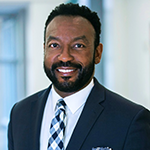

Health IT policy is complex. To make a real impact on public policy, health advocacy is vital and requires strong, respected and coordinated voices.
HIMSS Chapter advocates connect with and educate policymakers at state, provincial and local levels, amplify public policy priorities, research the issues, build coalitions and monitor legislation—all with the goal of influencing public policy. When successful, health advocacy has the power to:
- Guide health IT policy roadmaps
- Enact legislation
- Secure funding for strategic public policy support
- Share stories, data, information and public policy positions
Timing is one part of the advocacy success equation. Public policy often changes, for better or for worse, in the face of a crisis. When the rate of COVID-19 increased dramatically, we knew our HIMSS Chapter Advocates had real opportunities to influence policy on telehealth, care coordination, interoperability and patient privacy, to name a few.
Recognizing the positive effect health advocacy can have on public policy in times of change and in times of stability, we wanted to share advocates’ stories of making a difference in health IT and in people’s lives.
What advice do you have for others interested in health advocacy?
Nancy Hall, CHCIO, Chief Information Officer, CIOcloud Consulting; the Northern California Chapter of HIMSS Advocacy Chair: Get involved through your local HIMSS chapter advocacy activities.

Christopher Kunney, CPHIMSS, CPHIT, MSMOT, Chief of Strategy and Business Development, DSS, Inc.; a Georgia Chapter of HIMSS Chapter Advocacy Chairperson: Healthcare advocates take it upon themselves to encourage reform and partnership throughout the healthcare industry. Technically anyone can become an advocate for health IT if they’re passionate about modernizing our industry and using their voice for change. It does require a real commitment to influence change amongst our stakeholders. The ability to educate, influence and inspire our policy officials to positively impact the political determinants of health is the key to a successful health advocacy program.

Ian Slade, RN, MBA, PMP, FHIMSS, Managing Partner, IT Consulting Group; the Southern California Chapter of HIMSS Advocacy Vice President: Just jump in. Talk to advocates in your chapter and ask if you can join the calls, attend virtual marches and reach out to local legislators. Advocacy is an action word. Just start doing it and learn along the way.

Pam Varhol, EdD, Associate Dean, Health Professions, Southern New Hampshire University; a New England Chapter of HIMSS Chapter Advocate: Connect with your HIMSS chapter board regarding advocacy opportunities. Expressing your interest in health advocacy is a great first step in achieving your goal. Ask how you may help with the chapter’s initiatives and volunteer for a position.
Begin your advocacy career by participating in the monthly chapter advocacy roundtable calls. Each call provides important legislative updates, monthly tasks, and an opportunity to connect with other advocates. Attend trainings and listen to advice on other’s successes and challenges. Learn and succeed with each other.
How did you get started as a health advocate?
Hall: Working with the Northern California Chapter of HIMSS, I was introduced to health advocacy through our California State Health IT Day events. This was during the early stages of meaningful use and the HITECH Act, which was critical legislation that impacted our transformation of healthcare to increase the use of electronic health records.
Kunney: I was invited to participate in U.S. National Health IT Week in Washington, D.C., a number of years ago. I had the opportunity to visit the halls of Congress to share our “HIMSS Ask.” I was hooked for that point going forward. Nine years later, I’ve been involved with our local and national advocacy programs to varying degrees and doing a second tour as our chapter advocacy chairperson.
Slade: I started as a registered nurse when I was 19. At its core, nursing is patient advocacy. Everything we do is driven by the desire to make the patient’s condition better. Advocacy for health information and technology was a natural progression for me.
Varhol: Years ago, an alumnus came to visit my office and suggested that I connect with the New England Chapter of HIMSS student liaison and get involved with the board. The liaison came to my office for a visit to discuss the chapter. Then I get a call from a chapter leader. He recruited me into the New Hampshire advocacy role. He guided me through the calls and introduced me to the board. Everything started with that initial visit.
What lessons have you learned along the way?
Hall: Legislation has a significant impact on the transformation of healthcare. Sometimes, the most significant changes start with healthcare policy. Staying up to date on where the government is going with health information and technology is critical to strategic planning and developing future plans for healthcare organizations.
Kunney: It’s important to find a legislative champion. They can become a strategic advocate in the political machine. Start with local and key state officials who serve on healthcare, technology and economic development committees and grow your support from there. Also partnering with other organizations with similar agendas helps to strengthen your message and access to our legislative leaders.
Slade: You’ll never be as prepared as you want to be, but you still have to show up. Advocacy is about showing up. Showing up for those without voices. Showing up for the underrepresented. Showing up to work with legislators to make a difference. Just keep showing up.
Varhol: Have patience: I wrote a lot of letters before I started to get a response. Planting a seed that may not grow for several years is important. I have been talking about telehealth for several years. This is the year that telehealth has come to life. Start with small steps and tasks. Grow your efforts. Go to the HIMSS Global Health Conference, if feasible. Meeting leaders in person is a powerful experience. I used to think everything may be done while sitting at a desk. The power is in the people and the relationships that are built.
We asked our chapter leaders about the impact of COVID-19 on health advocacy and public policy. Here’s what they had to say.
How have you applied these lessons during the COVID-19 pandemic?
Hall: The legislation introduced during COVID-19 was key to the telehealth implementations that took place over the past six months. These changes will have long-term effects on how we deliver healthcare to patients.
Kunney: Our chapter continues to serve as a nonpartisan voice to our legislative bodies. Whenever possible, we provide timely, actionable information we believe can assist them in making informed policy decisions that impact public health. We continue to follow this practice even in the mist of the COVID-19 pandemic.
Slade: Surviving this pandemic requires advocacy on different levels. First, you have to advocate for your own health and sanity! Next, your nuclear family. Keeping them safe is of utmost importance. Then, there’s our role as a member of our community. Doing our fair share of social distancing, wearing masks and personal hygiene to keep others safe. I’m part of a group right now that helps with marketing and communication efforts to keep our patient community informed about the latest news and actionable items related to COVID-19.
What inspires you as a health advocate?
Hall: Understanding that everyone does have a voice in transforming healthcare. We can get involved to help to educate our legislators and chapter members.
Kunney: As citizens of the United States, we are afforded the freedom and have the responsibility to make our elected officials aware of the circumstances that impact our daily lives. Healthcare affects us all. HIMSS give us a vehicle through the chapter advocacy program to voice these concerns and allow us the opportunity to offer objective commentary to the individuals who ultimately influence policy decisions. We see our impact each day in the decisions they make. This inspires me and confirms my belief in our democracy.
Slade: I’m an eternal optimist. I believe that given the opportunity, people want to do good. The key is to be there to guide, coach and nudge them along the way. Working with legislators in Sacramento and staffers in D.C. has been an honor and a privilege that I hope more people get to experience. Representing other people’s voices and bringing their untold stories to chambers of power is both humbling and exciting in equal measure.
Varhol: I hopped in a cab at an airport and told the driver I was in town for the HIMSS Global Health Conference. He proceeds to tell me a rather personal health story and how the Affordable Care Act enabled him to seek medical treatment that was needed. His life was saved because of the care he received. I realized that this person and others like him are my inspiration to be an advocate.
Get Involved in Health Advocacy
Be part of a community of advocates that are helping transform health information and technology with courage, curiosity and determination. Contact your HIMSS Chapter to learn more about getting involved in chapter advocacy efforts.



